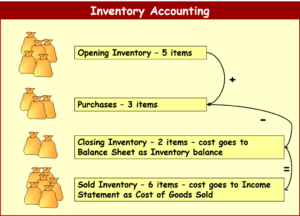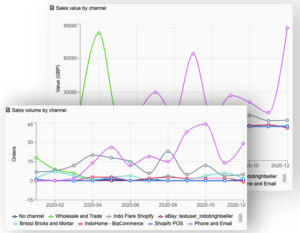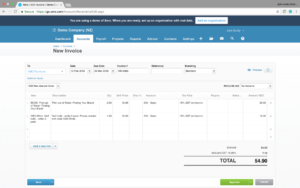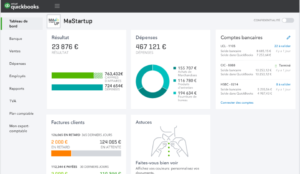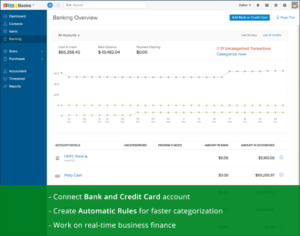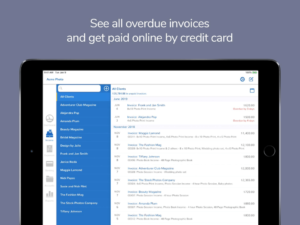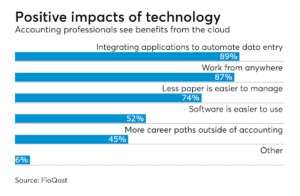What is Accounting and Inventory Software?
Accounting software helps you to streamline accounting processes such as creating invoices, recording payments, and tracking metrics. Some very basic software might require you to input data manually, but in most cases the system is set up to receive financial information automatically from your sales, bank accounts, and credit card providers.
Inventory software provides a computerized method of tracking and managing stock levels and value, so that you can fulfill orders accurately and speedily. More advanced systems also come with features which allow you to predict trends and peaks so you never get caught out with too much or too little stock.
Why Invest in Accounting and Inventory Software?
Accounting and inventory software is a sound investment for your business. Putting everything online means you’re no longer relying on paperwork, which can easily go astray. Automation massively reduces time spent on data entry, which improves productivity and accuracy.
Online accounting software brings together everything you’d find in a general ledger. It lets you track accounts receivable and payable, and quickly run financial reports to see how you’re doing. With a cloud-based solution, businesses can access records at the same time as their bookkeeper or accountant.
It’s crucial to accurately track inventory levels, particularly in the fast-paced world of e-commerce. Inventory management software helps you avoid overstocking or stockouts, and automates labor-intensive processes like product identification, reorder points, and dropshipping.
You can invest in separate softwares, but it makes sense to pick a platform that offers advanced tools for both accounting and inventory (and more besides), like Brightpearl. With all the data in one central system, you’re in a better position to analyze the overall health of your business and make important decisions.
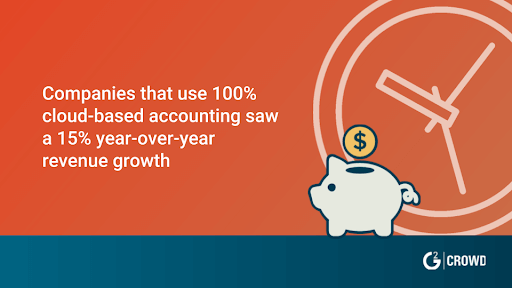
Source: learn.g2.com
What Should You Look For in Your Accounting and Inventory Management Software?
Dashboard
A dashboard is an important feature of any accounting and inventory software, as it brings all the data together to give you a real-time overview. Many software solutions allow you to customize the dashboard to your own preferences.
In terms of accounting, you’ll see metrics on cash flow, profit and loss, expenses, sales, and accounts payable and receivable. On the inventory side, it will display stock levels, current inventory value, movement of stock, and sales orders.
As well as collating information into handy graphs and charts, dashboards help you spot items that need immediate attention—such as unpaid invoices or missing stock.
Bank and Transactions
Most accounting software syncs with your bank and credit card accounts. You’ll receive daily updates of all transactions and see a daily overview of your accounts—making it easy to identify any issues.
This is especially helpful for reconciliation, which can be completed daily instead of leaving it to the end of the month. Often, the software shows you matches between bank transactions and bills and invoices, which is a time-saver and ensures greater accuracy.
Invoicing
Look for software that streamlines the invoicing process, with features such as automatic invoice generation and delivery by email. This is ideal for recurring charges, as it saves team members having to carry out the repetitive tasks. The ability to take online payments via PayPal or Worldpay will speed things up, too.
With Brightpearl, you can automate the process of creating invoices, saving you huge amounts of time on this tedious process.
Templates
Both accounting and inventory software typically come with a set of pre-created templates, covering anything from bookkeeping and invoices to balance sheets and inventory lists. These help you save a lot of time, as well as standardizing operations to avoid discrepancies.
Software that lets you customize the templates is best, as you can add business-specific details or personalize documents for certain customers.
Reports
Templates are often used for generating reports, with the software automatically importing the relevant data. It should only take a matter of seconds to see the results, which will help you to make smarter decisions based on deep insights.
You can generate reports on anything you like: Request a general overview, or concentrate on one specific area (products, channels, customers, regions). Simple reports will show you outstanding invoices, best-selling products, employee productivity, or how much you owe in sales tax. More complex financial reports might include cash flow statements and profit and loss.
Inventory Tracking
For retail and wholesale businesses, you’ll definitely need your software to have an inventory management system. Tracking your inventory manually is not an option, as it’s time-consuming and prone to errors.
Some inventory software offers barcode scanning technology for faster product identification. Workers use a scanner or a mobile device to instantly read and log the code on each item, which automatically updates inventory levels.
Source: accountingcorner.org
Integrations
It’s important that your software integrates well with a range of other apps and platforms. Depending on which solution you choose, you might want to integrate a point-of-sale system, customer relationship management (CRM), or ERP (enterprise resource planning) tool.
Smooth integrations save time and boost productivity, because staff don’t have to toggle between apps or manually transfer data from one to another. And you can keep using the systems you’re used to.
A complete Retail Operating System like Brightpearl gives you a huge array of built-in functions, plus integrations with hundreds of top platforms & softwares in the retail technology ecosystem.
Automation
As well as housing all your important data in one platform, accounting and inventory software usually comes with a level of automation. Often involving AI-powered technology, it can massively reduce costs (and customer issues) thanks to increased efficiency.
For example, Brightpearl’s Automation Engine saves customers two months a year on average by streamlining workflows. Functions include automated dropshipping, fulfillment from multiple locations, and creating purchase orders.
Proactive Support
A high level of customer support is crucial when you’re adopting new software. The last thing you want is to be left high and dry in the event of urgent queries or technical glitches. Choose a solution with plenty of support options and a comprehensive SLA.
It’s also good to have onboarding and training included in the package, to get everyone up to speed.
Top 5 Accounting and Inventory Management Software
1. Brightpearl
Brightpearl covers more than just accounting and inventory—it’s a complete Retail Operating System that’s purpose-built for the retail and wholesale sector. It manages all your post-purchase operations so every piece of financial data automatically feeds into your accounting in real time.
For accounting with Brightpearl you have the options of using their own integrated real-time accounting or connect seamlessly with other leading accounting systems like Xero, QuickBooks & many others.
As well as connectors to these accounting systems, Brightpearl also comes with built in-house Plug & Play integrations to major Sales channels and Marketplaces e.g. Shopify, Magento, Bigcommerce, Amazon & Ebay to name a few. This allows you to easily branch out into new areas and start selling to new customers.
Another big requirement we’ve talked about for a god inventory management software is being able to forecast stock accurately. With Brightpearl’s smart Demand Planner, you’ll know exactly which products to order by taking into account your historical sales data (including sales & peak periods) and giving you recommendation on which inventory to order more of and even which products might need discounting to free up space in your warehouse.
See how Brightpearl can help with your accounting & inventory
2. Xero
Source: capterra.com
Xero’s accounting solution has a simple interface and easy-to-use functions including automated bank feeds. It’s got plenty of app integrations, but is definitely aimed at small business owners—even the Premium tier only has payroll capability for up to ten people.
Downsides include a lack of customization in invoicing, limited reporting capability, and the fact you can’t set a reorder level for inventory. Xero also trails on customer support, while the mobile apps don’t do everything the browser-based version does.
3. QuickBooks Online
Source: capterra.com
SMBs will appreciate QuickBooks Online’s affordability and ease of use, with built-in reports and on-the-go card payments. However, users may find that online support is somewhat lacking, and the mobile apps are not fully comprehensive.
There are also reports of occasional syncing problems with banks and credit cards. And if you started off with the separate Intuit self-employed plan, you can’t upgrade it to one of the small business plans, which is not great for scalability.
4. Zoho Books
Source: capterra.com
Zoho Books is aimed at very small organizations, although its Standard tier will cost you more than QuickBooks’ lowest-priced plan. It does have a completely free version, but that’s unlikely to give you the functionality you need.
Stock tracking is only available in the $40-per-month Professional tier. The integrated payroll feature is limited to California, New York, and Texas and there’s a limited pool of accountant partners. The useful time-tracking function has to be tied to specific projects.
5. Kashoo
Source: capterra.com
If you only need small business accounting software, Kashoo’s simple, user-friendly platform may be okay for you. It can be integrated with SurePayroll, and has chat, voice, and email support.
But retail businesses will find it lacks many of the inventory tracking tools they require—such as the ability to set starting inventory numbers or reorder points. Kashoo doesn’t use a standard dashboard, and it doesn’t have time-tracking, nor an Android app.
Why Choose Brightpearl?
Features
| Brightpearl | Xero | QuickBooks | ZohoBooks | Kashoo | |
| Real-time dashboard | Yes | Yes | Yes | Yes | No |
| Inventory tracking | Yes | Yes | Higher tiers only | Higher tiers only | No |
| Built-in payroll | Yes | No | Yes | Limited | No |
| Time tracking | Yes | Yes | Higher tiers only | Higher tiers only | No |
| Phone support | Yes | No | Top tier only | Paid plans only | Yes |
| Multiple currencies | Yes | Top tier only | Higher tiers only | Higher tiers only | Yes |
| Comprehensive mobile apps | Yes | No | No | Yes | No |
How Can Brightpearl Expedite Your Accounting and Inventory Management?
Brightpearl is specifically designed for retail and wholesale businesses. That means it’s got everything you need, so you don’t have to pay extra for add-ons and customizations. As well as advanced inventory and accounting features, it has its own CRM and POS functions—plus 24/7 tech support and a dedicated Customer Success manager.
A huge advantage of Brightpearl is the intuitive rules-based Automation Engine, allowing you to automate manual tasks like data entry, processing orders & invoicing. You can reduce human error by 65% as well as experiencing 50% lower labor costs.
Accounting entries are created automatically and in real-time, alongside features like Amazon FBA settlement report mapping and expense tracking. Brightpearl helps you keep customers happy with simple “click-to-pay” invoices and multi-currency capabilities.
As well as the native accounting platform, it offers integrations with other accounting systems, so you get the freedom to choose the best option for your business. (Using one of the features in Xero, QuickBooks, or Bill.com? You can access it via Brightpearl, alongside all the built-in goodies.)
Which is the Best Accounting and Inventory Software?
If you’re looking for a solution that gives you advanced accounting and inventory management in one robust platform, Brightpearl is the one for you. The focus on retail and wholesale e-commerce means you’ll benefit from real industry expertise, as well as the more general benefits of taking your operations online.
Brightpearl’s transparent, tailored pricing allows businesses to get exactly what they need, without paying for things they don’t. Alongside the top-notch customer support and tight security, there’s a 100% uptime SLA—so you’ll never lose access to your important data.
Frequently Asked Questions (FAQs)
Do I need accounting and inventory software?
Yes! Implementing software for accounting and inventory tasks will help you streamline a range of critical business needs. You might have started out by handling these processes manually, but growing businesses need the extra features and scalability of an advanced solution.
What should I look for in accounting and inventory management software?
You need to choose software that tracks the money moving in and out of your business, and helps you keep accurate inventory records. Look for a system that syncs with your bank and credit card accounts and has a full range of inventory management features.
You’ll also benefit from project management tools like time-tracking, and plenty of integrations with other apps. The best idea is to pick a comprehensive retail operations platform like Brightpearl.
What are the benefits of using accounting and inventory software?
This software enables you to speed up laborious tasks and increase productivity and efficiency. By reducing waste and error, you’ll reduce costs and increase profits, while keeping customers happy.

